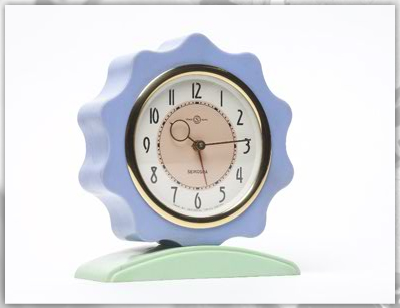Seiko Institute of Horology / Comet Flower
The Seiko Institute of Horology (now The Seiko Museum) was opened in 1981 as part of a project to commemorate the 100th anniversary of the founding of Seiko. The museum displays research materials related to time and timepieces produced in Japan and other countries around the world. (For more information, see the February 2009 issue of the PR magazine pla-topia.) http://museum.seiko.co.jp/

Plastics boast superior design flexibility, and color tone can also be freely obtained and for these reasons, they have come to be used in clock and watch housings and covers.
Plastics have come to be widely used om account of their ability to confer brilliant shapes and colors. Alarm clocks and desk clocks are the areas where it can be said that the design freedom of plastics has been best exhibited.

